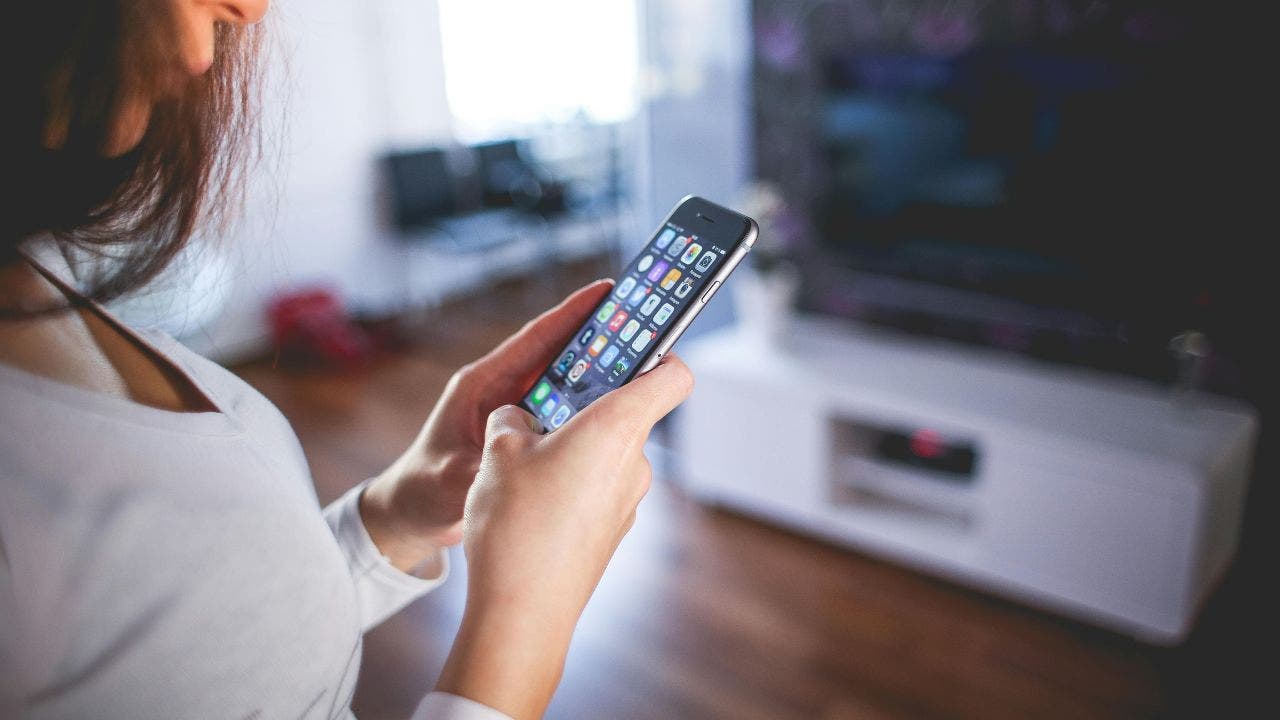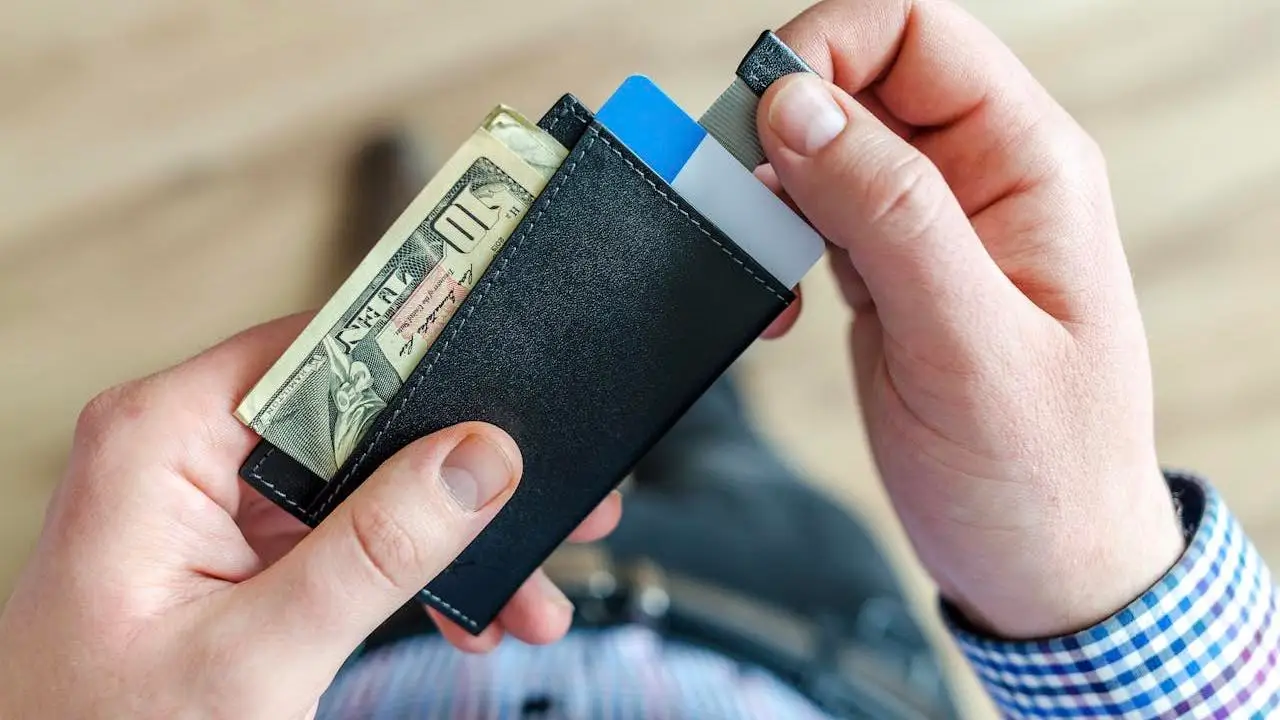Technology
Don’t get caught in the 'Apple ID suspended' phishing scam

Scammers keep coming up with new and, honestly, pretty clever ways to trick people. They socially engineer their phishing emails and messages so well that even the most tech-savvy users have to think twice. One example is the “Apple ID Suspended” phishing scam.
You might have seen it before since it’s been going around for the past few years.
Here’s how it works: You get an email from what looks like Apple, saying your Apple ID has been suspended.
The sender’s name shows “Apple,” but the email is actually from a scammer trying to get you to click on a malicious link.
I’M GIVING AWAY A $500 GIFT CARD FOR THE HOLIDAYS
A woman looking at her iPhone (Kurt “CyberGuy” Knutsson)
What you need to know
The Apple ID phishing emails have come a long way in recent years. They used to be plain text, had no Apple branding and didn’t even greet or address the user. Now, though, they look almost identical to genuine Apple emails. These fraudulent emails claim your Apple ID has been suspended to trick you into giving up login credentials or other sensitive information. They come complete with an Apple logo, show “Apple ID” as the sender name and have a big blue button that says “Go to Apple ID.”
WHAT IS ARTIFICIAL INTELLIGENCE (AI)?
The email pretends to be from Apple Support, claiming your access has been suspended due to “unusual activity” or missing or invalid information. It says you can’t access your account or Apple services until you verify your identity. There’s usually a link that leads to a fake Apple site, asking you to enter your username, password and additional personal details to reactivate your account. To add urgency, it even warns that if you don’t verify your Apple ID within 24 hours, it will be permanently blocked.

A person checking emails (Kurt “CyberGuy” Knutsson)
NEW CYBERATTACK TARGETS IPHONE AND APPLE IDS: HERE’S HOW TO STAY SAFE
Watch out for red flags
If you’re not paying attention, it’s easy to get tricked into clicking the link in a scam like this. But if you’re keeping an eye out, there are plenty of red flags. I’ve added a sample phishing email below, and you’ll spot the issues immediately. For one, it’s not actually from Apple; the email domain is @uaepass.ae, which has nothing to do with Apple. Any legit Apple email will end with “@email.apple.com,” so anything else is an instant red flag.
Then there’s the awful grammar and punctuation. A company worth $3.37 trillion can definitely afford a decent content writer. You know someone at Apple is not going to mix up past and present tense like it’s their first time writing an email.
Take this gem: “Therefore we need to re-verify your account data. if you did not verify your account within 48 hour, your account will be permanently locked, go to Apple ID and verify as soon as possible.” It reads like someone smashed a bunch of words together and called it a day. I’m not trying to give a grammar lesson here, but you get the point.

“Apple ID Suspended” phishing email (Kurt “CyberGuy” Knutsson)
HOW TO SECURELY LOCK YOUR IPHONE AND IPAD FROM PRYING EYES
6 ways to protect yourself from Apple ID phishing scams
1. Check the email address: Always verify the sender’s email address. Any legitimate email from Apple will come from a domain ending in “@email.apple.com.” If it’s anything else, like @uaepass.ae, it’s a scam.
2. Look for spelling and grammar mistakes: Phishing emails often have poor grammar and punctuation. If the message sounds odd or looks like it was written by someone who doesn’t know how to write well, be suspicious.
3. Don’t click on suspicious links: If the email asks you to click a link, don’t do it right away. Hover over the link to see the actual URL. If it doesn’t look like an official Apple website (or any site you trust), don’t click it.
The best way to safeguard yourself from malicious links that install malware, potentially accessing your private information, is to have antivirus software installed on all your devices. This protection can also alert you to phishing emails and ransomware scams, keeping your personal information and digital assets safe. Get my picks for the best 2024 antivirus protection winners for your Windows, Mac, Android and iOS devices.
4. Enable two-factor authentication (2FA): This adds an extra layer of protection to your Apple ID. Even if a scammer gets your password, they won’t be able to log in without the second authentication step.
5. Verify directly with Apple: If you’re ever unsure about an email or message, go directly to Apple’s official website or contact their support team. Don’t use any contact info provided in a suspicious email.
6. Invest in data removal services: Scammers often use personal information that’s readily available online to craft more convincing phishing attempts. By investing in data removal services, you can reduce the amount of personal data that’s exposed on the web, making it harder for scammers to target you effectively.
While no service promises to remove all your data from the internet, having a removal service is great if you want to constantly monitor and automate the process of removing your information from hundreds of sites continuously over a longer period of time. Check out my top picks for data removal services here.
TOP PHONE CHARGING CABLES THAT WILL SUPERCHARGE YOUR APPLE DEVICES
Kurt’s key takeaways
Scammers are getting pretty clever, but you don’t have to fall for their tricks. By staying alert and keeping an eye out for those red flags, you can easily spot these phishing attempts before they catch you off guard. Always double-check the sender’s email address, watch for bad grammar and don’t click on any suspicious links. If something feels off, don’t hesitate to go directly to Apple’s official website or contact their support team.
Do you think companies like Apple are doing enough to protect users from scams? Let us know by writing us at Cyberguy.com/Contact
For more of my tech tips and security alerts, subscribe to my free CyberGuy Report Newsletter by heading to Cyberguy.com/Newsletter
Ask Kurt a question or let us know what stories you’d like us to cover
Follow Kurt on his social channels
Answers to the most asked CyberGuy questions:
New from Kurt:
Copyright 2024 CyberGuy.com. All rights reserved.

Technology
L’Oréal claims its new skincare gadget can tell which ingredients work best for you
/cdn.vox-cdn.com/uploads/chorus_asset/file/25815135/L_Oreal_Cell_BioPrint__In_store.jpg)
L’Oréal is hoping its latest beauty gadget can demystify skincare. At CES 2025, the company announced Cell BioPrint, a device that’s designed to analyze your skin and give personalized advice on how to slow down signs of aging.
The device is the result of a partnership with NanoEntek — a Korean startup that specializes in chips that can read biofluids. A person essentially takes a facial tape strip, sticks it on their cheek, and then puts the strip in a buffer solution. That solution is then inserted into a cartridge for the Cell BioPrint to analyze. Once that sample is processed, the device takes images of your face as you answer a few short questions about skin concerns and aging.
From there, L’Oreal says it uses proteomics, or the analysis of protein structure and function from a biological sample. In this case, the Cell BioPrint is designed to determine how well your skin is aging. It’ll then give personalized advice on how to improve your skin’s appearance, as well as predictions of how responsive your skin may be to certain skincare ingredients.
It’s an attractive claim, but as with most beauty tech, it’s difficult to properly evaluate L’Oréal’s methods without peer-reviewed studies or experts weighing in. L’Oréal also claims the device can help predict future cosmetic issues before they manifest. For example, it may be able to determine if your skin is prone to hyperpigmentation or enlarged pores.
Skincare became massively popular during covid-19 lockdowns, sparking a shift in beauty trends toward self-care and the rise of “skinfluencers.” On the flip side, that virality has since turned skincare buying into an extreme sport. Hop onto TikTok, and you’ll find dozens of skinfluencers egging you into dropping $80 on a vial of vitamin C serum, debating the moisturizing properties of glycerin versus hyaluronic acid, or wagging a finger about this or that retinol cream. (Some, may even convince you to buy a wand that zaps your face to increase the efficacy of said ingredients.) It’s confusing, expensive, and maddeningly, what works for one person may not for another. The most the average consumer can do is cross their fingers and hope that the latest potion they bought will actually work.
The Cell BioPrint’s appeal is it claims to use science to cut through that noise. Maybe every skinfluencer says you need to start using retinol when you turn 30, but this device will purportedly tell you based on your own biology whether retinol will actually work for you. Personalization has always been a major theme with CES beauty tech, but it’s particularly compelling with skincare, which is highly dependent on your individual biology. But again, right now there’s no way to know how reliable the Cell BioPrint’s science and recommendations are.
L’Oréal says the Cell BioPrint will be easy to use, with the process taking only five minutes. It also says people will be able to repeat tests, enabling them to monitor changes and progress over time. That said, it might be a while before something like Cell BioPrint is available for consumers. L’Oréal says the device will first be piloted in Asia later this year but otherwise didn’t have a concrete launch timeline or price.
Technology
Can I outsmart thieves with a hidden AirTag in RFID wallet?

Apple AirTags can be a great way to outsmart car thieves, but there are some drawbacks to consider. A key limitation is that thieves who also have iPhones can usually detect a hidden AirTag in vehicles they are trying to steal. This makes hiding an AirTag tricky.
That’s why we were intrigued by Brian’s inquiry about using other ways to make Apple AirTags undetectable to car thieves or outsmarting them twice.
“If an AirTag is put in an RFID wallet and hidden in a car, can the AirTag be located by a thief using a locator? I know the AirTag will function in the wallet, but will it be undetectable by the thief?“ — Brian, LaSalle, Illinois
Below are reasons why using an RFID wallet might end up leaving you outsmarted instead.
I’M GIVING AWAY THE LATEST AND GREATEST AIRPODS PRO 2
Illustration of a car thief checking to see if the vehicle has an AirTag. (Kurt “CyberGuy” Knutsson)
Why RFID wallets might not outsmart car thieves?
Some thieves use RFID readers, which use radio waves, to scan and read data such as credit cards in wallets. The function of RFID wallets and bags is to protect items or devices from these radio waves by blocking them.
Apple AirTags use different technology, so even if it was placed in an RFID-blocking wallet or bag, it could still be detected by a thief with an iPhone or locator. Unlike the radio waves used to scan for credit cards and other data, Apple AirTags use Bluetooth and Ultra-Wideband (UWB) technology. Neither technology can be shielded by RFID-blocking material because those materials cannot block Bluetooth and UWB signals.

A person holding an RFID wallet. (Kurt “CyberGuy” Knutsson)
DO EMF BLOCKERS REALLY PROTECT US?
What can block AirTag technology?
Faraday bags, on the other hand, use electromagnetic shielding and can successfully block Apple AirTag signals, such as Bluetooth and Wi-Fi signals, from being detected by thieves. The only issue with putting an Apple AirTag in a Faraday bag to hide in your car is that if the car thief cannot read or locate the signal it emits, you cannot either.
While the Apple AirTag may go undetected when in a Faraday bag, you will likely not be able to use FindMy or any other tracking methods to locate it either, because those methods require signals pinged from the AirTag to other iPhones and Apple Devices to track location.
BEST CAR ACCESSORIES

An RFID wallet. (Kurt “CyberGuy” Knutsson)
WHAT IS ARTIFICIAL INTELLIGENCE (AI)?
Alternatives to AirTags for car security
While Apple AirTags offer some benefits, there are other technologies and methods to consider for enhancing car security. For example, GPS trackers provide real-time location data without the risk of being detected by a nearby iPhone. Additionally, physical deterrents like steering wheel locks and alarm systems can act as effective safeguards. Combining multiple layers of security can better protect your vehicle against theft. Check out how to prevent your car from being stolen.
HOW TO OUTSMART CAR THIEVES WITH THESE SMART AIRTAG TACTICS
Kurt’s key takeaways
While Apple AirTags can be a useful device to help you keep track of your vehicle, whether it is lost or stolen, it does not replace the reliability of a GPS system installed in your vehicle if you are trying to outsmart car thieves. Because car thieves might be able to locate an Apple AirTag hidden in your vehicle, it may not provide the layer of protection you hope for. Though the technology in RFID wallets will not block signals from an Apple AirTag, which will make them detectable to locators and scanners, Faraday bags will. Unfortunately, you will end up outsmarting yourself in trying to outsmart car thieves if you use a Faraday bag because you will then not be able to track the Apple AirTags either. If you are looking for the optimal way to outsmart car thieves, the Apple AirTags might not be the answer you are looking for.
What personal experiences have you had with technology aiding in theft prevention? Let us know by writing us at Cyberguy.com/Contact
For more of my tech tips and security alerts, subscribe to my free CyberGuy Report Newsletter by heading to Cyberguy.com/Newsletter
Ask Kurt a question or let us know what stories you’d like us to cover.
Follow Kurt on his social channels:
Answers to the most-asked CyberGuy questions:
New from Kurt:
Copyright 2025 CyberGuy.com. All rights reserved.
Technology
This pixel light grid can show you the weather (and the price of Bitcoin)
Govee is launching a new pixel light grid that can display art, animations, and live data. The Gaming Pixel Light lets you upload your own images and GIFs to display or choose from 150 different data sources, letting it provide live updates on the weather, Bitcoin prices, NBA scores, and more.
You can also sync the display to games you’re playing by hooking it up to Govee’s HDMI sync box or play 8-bit tunes that sync to the pixel grid using the built-in speaker. Naturally, there’s an AI component as well — an accompanying app can generate new pixel art for you using Govee’s “AI Lighting Bot.”
The Gaming Pixel Light is compatible with Amazon Alexa and Google Assistant. You can wall-mount the screen or place it atop a table or desk, making it seem like a neat little addition to a gaming room or office.
Along with this pixel light, Govee is announcing the Table Lamp 2 Pro — an LED-packed tabletop lamp with a 2.5-inch JBL speaker that syncs up lighting with your music. The portable device has 210 independently controlled LED beads and 600 lumens of brightness. When it’s not synced with your music, you can customize the lighting yourself or choose from 100 preset scenes.
The lamp works with Matter, Google Assistant, and Alexa and comes with a rechargeable battery. You can also link two lamps together for a “full stereo surround experience.” Govee says it will release the Gaming Pixel Light and the Table Lamp 2 Pro in the second quarter of 2025, but it didn’t provide any pricing information.
-

 Health1 week ago
Health1 week agoNew Year life lessons from country star: 'Never forget where you came from'
-
/cdn.vox-cdn.com/uploads/chorus_asset/file/24982514/Quest_3_dock.jpg)
/cdn.vox-cdn.com/uploads/chorus_asset/file/24982514/Quest_3_dock.jpg) Technology1 week ago
Technology1 week agoMeta’s ‘software update issue’ has been breaking Quest headsets for weeks
-

 Business5 days ago
Business5 days agoThese are the top 7 issues facing the struggling restaurant industry in 2025
-

 Culture5 days ago
Culture5 days agoThe 25 worst losses in college football history, including Baylor’s 2024 entry at Colorado
-

 Sports5 days ago
Sports5 days agoThe top out-of-contract players available as free transfers: Kimmich, De Bruyne, Van Dijk…
-

 Politics3 days ago
Politics3 days agoNew Orleans attacker had 'remote detonator' for explosives in French Quarter, Biden says
-

 Politics3 days ago
Politics3 days agoCarter's judicial picks reshaped the federal bench across the country
-

 Politics1 day ago
Politics1 day agoWho Are the Recipients of the Presidential Medal of Freedom?













